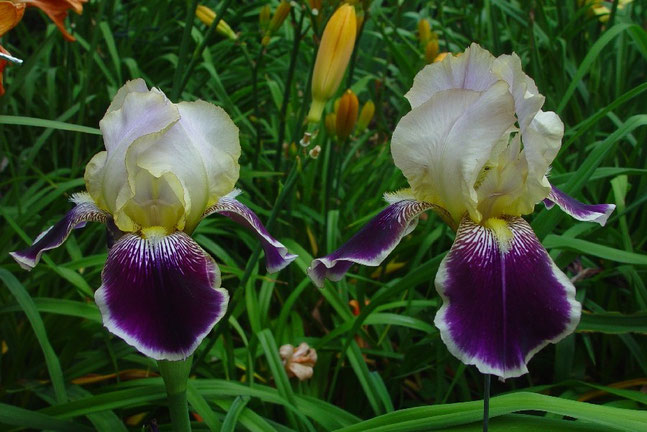
The intense breeding of bearded irises outside of Europe has created many new varieties that thrive very well under the excellent conditions, for example in the United States, whereas in Europe they don't occur vigorous enough and they are prone to rot.
Besides the period the irises may remain on one place in the bed has been shortened instead of being extended further in the course of this intense breeding. To bring the modern German varieties closer to the fast-growth, constancy and easy-care of the good old varieties, the Gesellschaft der Staudenfreunde (→Societies) appropriated funds for the Vingolf-Project in 2004 in order to enable its Iris Group to induce the Dutch company Iribov to produce tetraploïd copies of the old diploïd iris varieties Vingolf and Rheinfels. Those tertraploïd Vingolf and Rheinfels plants are characterized by slightly larger flowers and stronger growth than their diploïd parents and can last longer than other types of modern irises at one point in the garden.
Since then the aim of the participating iris breeders has been to transfer the in the course of time emerged diversity of modern irises to the frugality of the two new ancients. In 2011 a first seedling bloomed in the garden of the Iris Group Head Volker Klehm, in 2012 approximately 60 seedlings in the garden of Dr. Tomas Tamberg. The first step to a combination of beauty and frugality is seen as successful, but a real recombination of genes will only be reached after backcrossing the F1 generation. It remains to be seen what the Vingolf-Project will do for the German iris breeding.
Pictures of the first promising seedlings (Dr. Tomas Tamberg)

















